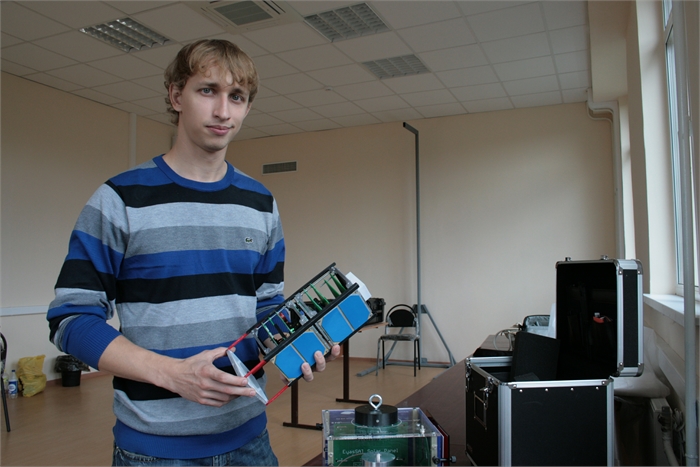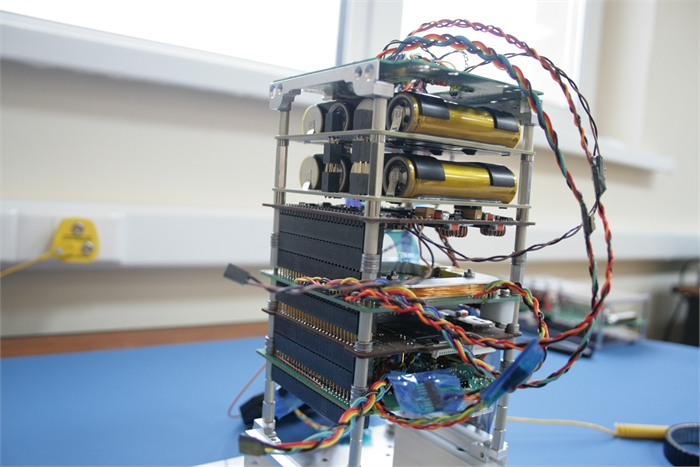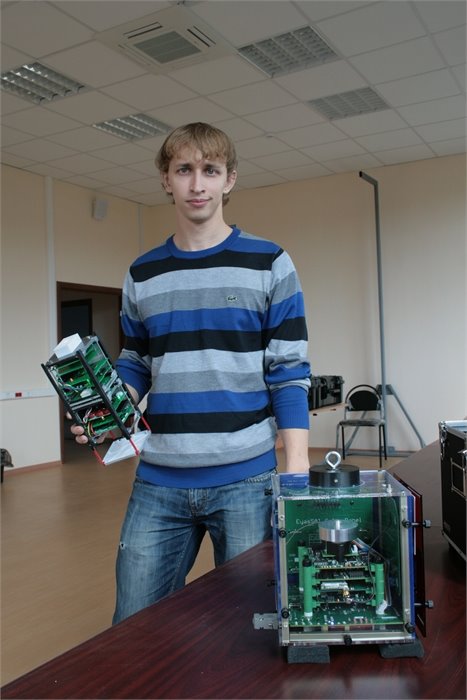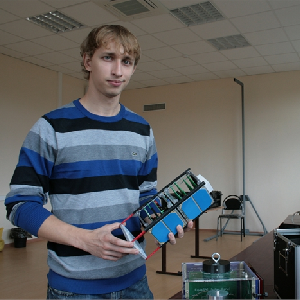Currently SSAU laboratories are working on the projects of three new nanosatellites. The first of them is a training device “SamSat-218”. The main objective of this satellite is a demonstration of navigation and control technologies. Researches aimed at improving of performance reliability of equipment will make space experiments more efficient.
In December 2015 “SamSat-218” will go into space within the framework of the first launch from the space-launch complex “Vostochniy”. It will be placed in orbit with another SSAU satellite – a small spacecraft “Aist-2”, which is created by the scientists and students of the Aerospace University in partnership with specialists of the Rocket Space Centre “Progress”.
Already in 2016 the second SSAU nanosatellite, created for participation in the international program of geophysical fields monitoring QB50 will go into space. The project was proposed by von Karman Institute for Fluid Dynamics (Belgium) for near-Earth space research. Orbital launching of 50 satellites designed in different countries of the world will be performed within the framework of the program. Department of Space Research of Samara State Aerospace University will be the only representative of Russia in the project.
Creation of Samara Earth Observation Unit which will be assembled exclusively from domestic components is planned for 2017. Thus, the concept of the government of the Russian Federation for transition to import substitution in strategically important industries is implemented in practice.
The development program on nanosatellite technology, developed at SSAU Department of Space Research assumes annual orbital launching of such devices. In addition, scientists and students involved in the Department work at the project of creation of manoeuvring pod for nano-satellites, as well as the original technology of their separation with a restart.
Professor Igor Belokonov, Scientific Advisor of SSAU Centre of Tests and Integrated Optimization of Nanosatellites Systems, notes that activation of space researches by the University specialists became possible due to the industry support by the Governor Nikolay Ivanovich Merkushkin. The regional government has allocated 23 million roubles for development of the nanosatellites creation program.
“Initiatives of the regional government have created a unique environment for the development of nanosatellite technology in Samara, - noted Igor Belokonov. - In conjunction with the scientific potential of Samara universities and best practices of the Rocket Space Centre, we got the opportunity for rapid development and implementation of advanced space technologies”.



For reference
SSAU is one of the few universities in the world having its own orbit group of spacecraft, as well as data receipt and processing complex. Since 2013 two satellites series “AIST” created by SSAU scientists and students together with specialists of the Rocket Space Centre “Progress” perform work in the near-Earth space. Both spacecrafts are intended for educational, scientific, technical and experimental aims.
In 2015 the group will be completed with a nanosatellite and a new device AIST-2, fitted with more advanced equipment, such as instruments for remote sensing of the Earth. Carrier rocket "Soyuz-2.1a" equipped with a new upper stage “Volga” and created by the Rocket Space Centre “Progress” will perform its orbital launching. It will be the first launch from the space-launch complex “Vostochniy”, construction of which is being completed in Amur Region.
 RU
RU  EN
EN  CN
CN  ES
ES 